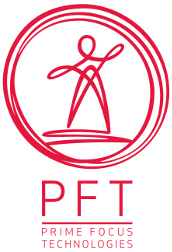Media ERP: Embracing Automation Across the Content Supply Chain
CULVER CITY, CALIF.—For executives in the Media & Entertainment (M&E) industry, new models for success are driven by the need to realize greater profits by lowering Total Cost of Operations (TCOP) while simultaneously increasing overall throughput. This is especially true relative to Media Enterprise Resource Planning (ERP) with key objectives focused on streamlining the content supply chain across the enterprise and automating tasks from ideation through distribution. It’s a very ambitious set of objectives for any M&E business, that can have extraordinary outcomes when achieved.

Achieving these goals relies on investment and innovation, both of which must be orchestrated closer to the point where content and technology intersect. However, the unfortunate reality is that legacy media asset management (MAM) models continue to exist, with multiple on-premise, non-scalable systems deployed across different business units, departments and locations within an organization. These systems result in production delays, duplication of content, lack of agility and higher content management costs.
The ideal solution to these pain points is to implement a single enterprise-wide Media ERP solution that helps embrace digital transformation beyond technology departments. A purpose-built Media ERP solution will drive creative enablement, enhance efficiencies, reduce costs and increase monetization. A cloud-based Media ERP solution in particular, delivers numerous benefits across four key areas: efficiency, flexibility, collaboration, and content delivery.
EFFICIENCY
Media ERP solutions provide organizations with a single software to automate their entire content supply chain with the ability to perform advanced processing and delivery operations via the cloud. By deploying one software solution across the enterprise, M&E companies can easily manage their resources to tie together multiple systems, contributors and other stakeholders within the supply chain.
Cloud-based Media ERP solutions arrive ready-to-deploy, include a wide range of preset robots and automate many otherwise time and labor-intensive manual tasks. They use automation to efficiently and effectively prepare, package and deliver content to linear and non-linear platforms with little or no human intervention.
While on-premise solutions rely on manual content workflows, the automation capabilities of cloud-based Media ERP solutions enable easy hand-off from one department to another without inconsistency, duplication, or confusion. This results in increased efficiency across the enterprise, allowing M&E organizations to improve their capabilities without the need for additional staff or investment in multiple products that will ultimately end up being underutilized. This combination of factors adds up to significant overall savings in both operations and MAM, while drastically reducing TCOP.
FLEXIBILITY
Harnessing the power of hybrid cloud architecture, Media ERP solutions allow content owners to run workflows at any time and from any location, while also retaining high resolution content in-house. This cloud-based workflow orchestration addresses end-to-end content operations across the enterprise, allowing users to leverage existing workflow templates or create their own with instant use of primitives. Equipped with different modules, Media ERP solutions also allow M&E companies to select the best possible combination of applications they need to meet their specific needs.
Cloud-based Media ERP solutions also provide power-packed metadata management with unlimited data extensibility, advanced essence management, and support for DPP (AS-11), AS02, BXF, IMF, Dublin Core and others. This allows M&E organizations to leverage and protect their existing investments while increasing throughput of content.
COLLABORATION
Another key benefit of cloud-based Media ERP solutions is the ability for various content creators and managers to collaborate using a single system. A comprehensive suite of Media ERP applications allows for workflow orchestration across the enterprise, supply chain and partner ecosystems. Regardless of their physical location, all departments are able to access content, make notes and provide feedback at a moment’s notice. All of these functions contribute to increasing operational efficiencies and achieving faster time-to-market.
Among the many features that enable this seamless collaboration is access to metadata enrichment services such as cataloguing, ad contextualization, new-media search tag enrichment and much more.
In addition, cloud-based ERP solutions for the M&E industry perform site-to-site digital rights management, with the power to support ingest, metadata and digital library management. These capabilities also serve to liberate creative teams, offering them a work-life balance that simply cannot be achieved using disparate on-premise legacy systems. Automating a number of time-consuming processes—such as user-rights management and licenses to storage subscriptions—enables content creators to focus their efforts on developing better content, rather than performing the business tasks behind managing that content. Not only does this contribute to M&E organizations’ flexibility and output, higher-quality content can directly contribute to increased net revenues.
CONTENT DELIVERY
Detailed, multi-layered smart metadata allows content owners to deliver large volumes of content quickly and cost-efficiently. For example, Prime Focus Technologies’ cloud-based Media ERP solution currently manages content and workflows across 183 hybrid physical/cloud sites and powers over 400 television shows every day. Transcoding is highly efficient and cost-effective and the system helps generate quick compliance packages for TV Everywhere, DPP and YouTube publishing, among others. This processing flexibility allows M&E organizations to easily repurpose content for distribution across a variety of platforms, including web, mobile, video on demand and IPTV—all while seamlessly enforcing rights throughout the distribution process.
For M&E executives and their organizations, the benefits of a purpose-built cloud-based Media ERP solution are very clear. Such solutions allow organizations to make proper investments in innovation and finally abandon the inefficient, inconsistent and costly model of using multiple, non-scalable content management systems. A unified cloud-based Media ERP solution offers the highest levels of efficiency, savings, flexibility, creative enablement and increased monetization that M&E companies are looking to achieve.
Get the TV Tech Newsletter
The professional video industry's #1 source for news, trends and product and tech information. Sign up below.
